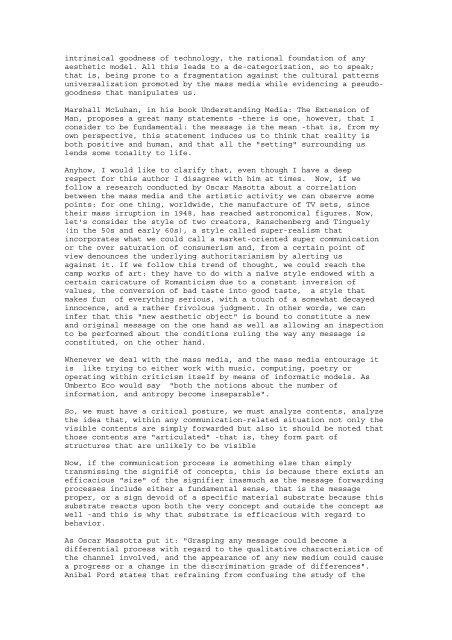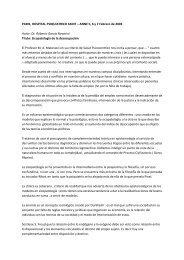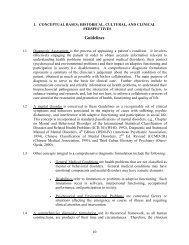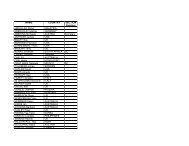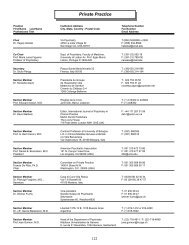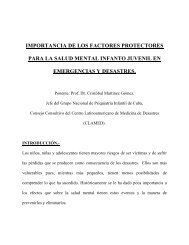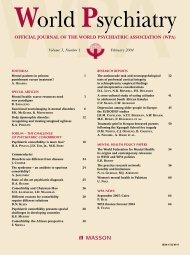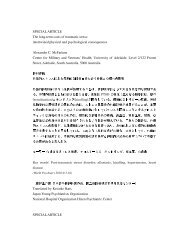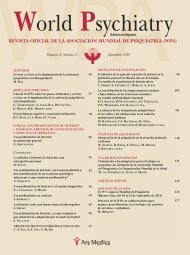the mass media and their relationship with the postmodern culture
the mass media and their relationship with the postmodern culture
the mass media and their relationship with the postmodern culture
Create successful ePaper yourself
Turn your PDF publications into a flip-book with our unique Google optimized e-Paper software.
intrinsical goodness of technology, <strong>the</strong> rational foundation of anyaes<strong>the</strong>tic model. All this leads to a de-categorization, so to speak;that is, being prone to a fragmentation against <strong>the</strong> cultural patternsuniversalization promoted by <strong>the</strong> <strong>mass</strong> <strong>media</strong> while evidencing a pseudogoodnessthat manipulates us.Marshall McLuhan, in his book Underst<strong>and</strong>ing Media: The Extension ofMan, proposes a great many statements -<strong>the</strong>re is one, however, that Iconsider to be fundamental: <strong>the</strong> message is <strong>the</strong> mean -that is, from myown perspective, this statement induces us to think that reality isboth positive <strong>and</strong> human, <strong>and</strong> that all <strong>the</strong> "setting" surrounding uslends some tonality to life.Anyhow, I would like to clarify that, even though I have a deeprespect for this author I disagree <strong>with</strong> him at times. Now, if wefollow a research conducted by Oscar Masotta about a correlationbetween <strong>the</strong> <strong>mass</strong> <strong>media</strong> <strong>and</strong> <strong>the</strong> artistic activity we can observe somepoints: for one thing, worldwide, <strong>the</strong> manufacture of TV sets, since<strong>the</strong>ir <strong>mass</strong> irruption in 1948, has reached astronomical figures. Now,let's consider <strong>the</strong> style of two creators, Ranschenberg <strong>and</strong> Tinguely(in <strong>the</strong> 50s <strong>and</strong> early 60s), a style called super-realism thatincorporates what we could call a market-oriented super communicationor <strong>the</strong> over saturation of consumerism <strong>and</strong>, from a certain point ofview denounces <strong>the</strong> underlying authoritarianism by alerting usagainst it. If we follow this trend of thought, we could reach <strong>the</strong>camp works of art: <strong>the</strong>y have to do <strong>with</strong> a naïve style endowed <strong>with</strong> acertain caricature of Romanticism due to a constant inversion ofvalues, <strong>the</strong> conversion of bad taste into good taste, a style thatmakes fun of everything serious, <strong>with</strong> a touch of a somewhat decayedinnocence, <strong>and</strong> a ra<strong>the</strong>r frivolous judgment. In o<strong>the</strong>r words, we caninfer that this "new aes<strong>the</strong>tic object" is bound to constitute a new<strong>and</strong> original message on <strong>the</strong> one h<strong>and</strong> as well as allowing an inspectionto be performed about <strong>the</strong> conditions ruling <strong>the</strong> way any message isconstituted, on <strong>the</strong> o<strong>the</strong>r h<strong>and</strong>.Whenever we deal <strong>with</strong> <strong>the</strong> <strong>mass</strong> <strong>media</strong>, <strong>and</strong> <strong>the</strong> <strong>mass</strong> <strong>media</strong> entourage itis like trying to ei<strong>the</strong>r work <strong>with</strong> music, computing, poetry oroperating <strong>with</strong>in criticism itself by means of informatic models. AsUmberto Eco would say "both <strong>the</strong> notions about <strong>the</strong> number ofinformation, <strong>and</strong> antropy become inseparable".So, we must have a critical posture, we must analyze contents, analyze<strong>the</strong> idea that, <strong>with</strong>in any communication-related situation not only <strong>the</strong>visible contents are simply forwarded but also it should be noted thatthose contents are "articulated" -that is, <strong>the</strong>y form part ofstructures that are unlikely to be visibleNow, if <strong>the</strong> communication process is something else than simplytransmissing <strong>the</strong> signifié of concepts, this is because <strong>the</strong>re exists anefficacious "size" of <strong>the</strong> signifier inasmuch as <strong>the</strong> message forwardingprocesses include ei<strong>the</strong>r a fundamental sense, that is <strong>the</strong> messageproper, or a sign devoid of a specific material substrate because thissubstrate reacts upon both <strong>the</strong> very concept <strong>and</strong> outside <strong>the</strong> concept aswell -<strong>and</strong> this is why that substrate is efficacious <strong>with</strong> regard tobehavior.As Oscar Massotta put it: "Grasping any message could become adifferential process <strong>with</strong> regard to <strong>the</strong> qualitative characteristics of<strong>the</strong> channel involved, <strong>and</strong> <strong>the</strong> appearance of any new medium could causea progress or a change in <strong>the</strong> discrimination grade of differences".Anibal Ford states that refraining from confusing <strong>the</strong> study of <strong>the</strong>


